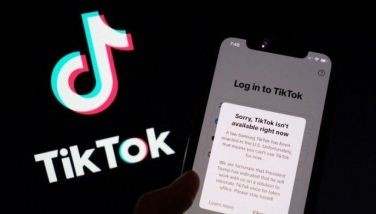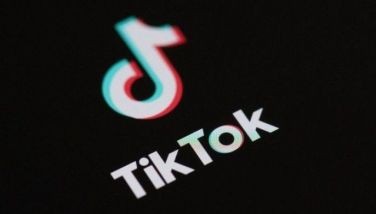Gadgets galore, ‘green electronics’ at CES
January 23, 2007 | 12:00am
The 2007 International Consumer Electronics Show (CES) in Las Vegas ended 10 days ago, but for the hundreds of new products launched during this mega technology event the real show, with the global market as its stage, has just started.
This year’s CES marked its 40th anniversary with a lot of noise around the fluid delivery and ravenous consumption of digital content across all forms of networked products. Microsoft founder Bill Gates, who delivered the first keynote, called this year’s CES as the "most manic environment" that showcased the "most amazing hardware that define how services will be delivered to consumers." For about two hours Gates, with his team of executives, demoed Microsoft’s newest operating system, Windows Vista, saying that "it’s by far the most high quality release we’ve done… and the biggest investment ever made in a piece of software that is most used."
At the exhibition floor that spanned three separate locations that totaled 1.66 million net square feet or the equivalent of 35 football fields, it was easy to see how video inspired a parade of new services and media players that promise to deliver video to consumers over the air or through the Internet. In addition, High Definition was one of the strong buzzwords that frequently got spewed out of exhibitors’ mouths.
Sony Electronics, for example, demonstrated at the start of CES its first Internet video system, the Bravia Internet Video TV, "that can stream high definition content at a press of a button in a remote control, and without a PC," said Stan Glasgow, president and chief operating officer, during a presscon. The Bravia Internet Video TV system will have proprietary digital connectors to link it to any of Sony’s Bravia LCD TVs. It will deliver for free streamed music and video content, including high definition ones, initially from AOL, Yahoo and Sony entertainment companies.
The thick interest surrounding High Definition Radio and High Definition TV was rivaled by the raging industry battle between Blu-ray Disc and HD DVD formats. Many analysts anticipate the inevitable victory of Blu-ray, which, they say, already claims as much as two-thirds of the installed base of high-def disc set-top players and videogame consoles in the US. Of course, those from the HD DVD camp disagree so that some manufacturers like LG decided to play it safe by launching hybrid HD players at the show. LG’s dual-format Super Multi Blue player is said to be the first of its kind and is expected to ship around March. For many people, that may be too soon to save up $1,199 to buy one. In fact, LG’s new appliance costs only a dollar short of the total consumer electronics spending made by average American households last year, based on data from the Consumer Electronics Association (CEA).
Also a constant attraction at the show was the sea of MP3 players in every conceivable form, size and color that drew crowds despite their knowing that Apple was announcing in San Francisco right after CES the iPhone, a combination of mobile phone, wide-screen iPod with touch controls, and Internet communications device in one small gadget.
CES 2007, however, is not just a show of who has the biggest and fastest hardware. All visitors whose legs felt like dying walking around the booths of 2,700 exhibitors from 130 countries, also learned during the show about two very important campaigns that seek to protect the environment and consumer’s rights.
As part of its ongoing environmental initiative, the CEA launched myGreenElectronics.org., a website that offers comprehensive tools designed to educate consumers about responsible use, reuse and recycling of electronics, while providing insights into the industry’s energy and material conservation efforts. Essentially, myGreenElectronics.org takes the traditional 3 R’s of recycle, reuse and reduce and adds a fourth – rethink. CEA uses e-waste as an example for educating consumers about the responsible purchasing, enjoyment and disposal of electronics.
The website includes:
• A zip code search of certified electronics recyclers, making it convenient for consumers to discover their area e-cycling options.
• Energy saving tips and efficiency information for products we enjoy every day.
• A searchable database of "green" electronics, comprised of the ever-expanding eco-friendly product lines developed by many companies.
• A regularly updated calendar of electronics recycling events nationwide.
• A myths versus facts section to outline the truth behind consumer electronics and energy consumption.
CEA distributed bookmarks and keychains made from circuit boards recovered from outdated and defective PC board production and thus diverted from landfills.
Also launched was the Digital Freedom Campaign (www.digitalfreedom.org), led by Gary Shapiro, CEA president and CEO. The Digital Freedom Campaign holds at its core value the recognition that new technologies are essential to creativity and innovation. Digital technology allows anyone and everyone to be an artist and an innovator – to produce music, to create cutting-edge films and videos, and to reach new audiences. For consumers, it allows individuals the ability to enjoy these new works when they want, where they want, how they want and to participate in the process. These are basic freedoms that must be protected and nurture.
In one of his opening speeches, Shapiro strongly emphasized the need to protect the rights of consumers, artists, innovators, producers, and creators to use digital technology when, where and how they choose.
"New technologies are under fierce attack by the big record labels and movie studios who think that enjoying and creating lawfully obtained music, video and other content for your personal use somehow makes your guilty of piracy. Those attacks go right to the heart of our basic right to use digital technology without unreasonable government restrictions or the threat of costly lawsuits… Let us not allow them to take away our rights," he said, earning a loud applause from the crowd.
This year’s CES marked its 40th anniversary with a lot of noise around the fluid delivery and ravenous consumption of digital content across all forms of networked products. Microsoft founder Bill Gates, who delivered the first keynote, called this year’s CES as the "most manic environment" that showcased the "most amazing hardware that define how services will be delivered to consumers." For about two hours Gates, with his team of executives, demoed Microsoft’s newest operating system, Windows Vista, saying that "it’s by far the most high quality release we’ve done… and the biggest investment ever made in a piece of software that is most used."
At the exhibition floor that spanned three separate locations that totaled 1.66 million net square feet or the equivalent of 35 football fields, it was easy to see how video inspired a parade of new services and media players that promise to deliver video to consumers over the air or through the Internet. In addition, High Definition was one of the strong buzzwords that frequently got spewed out of exhibitors’ mouths.
Sony Electronics, for example, demonstrated at the start of CES its first Internet video system, the Bravia Internet Video TV, "that can stream high definition content at a press of a button in a remote control, and without a PC," said Stan Glasgow, president and chief operating officer, during a presscon. The Bravia Internet Video TV system will have proprietary digital connectors to link it to any of Sony’s Bravia LCD TVs. It will deliver for free streamed music and video content, including high definition ones, initially from AOL, Yahoo and Sony entertainment companies.
The thick interest surrounding High Definition Radio and High Definition TV was rivaled by the raging industry battle between Blu-ray Disc and HD DVD formats. Many analysts anticipate the inevitable victory of Blu-ray, which, they say, already claims as much as two-thirds of the installed base of high-def disc set-top players and videogame consoles in the US. Of course, those from the HD DVD camp disagree so that some manufacturers like LG decided to play it safe by launching hybrid HD players at the show. LG’s dual-format Super Multi Blue player is said to be the first of its kind and is expected to ship around March. For many people, that may be too soon to save up $1,199 to buy one. In fact, LG’s new appliance costs only a dollar short of the total consumer electronics spending made by average American households last year, based on data from the Consumer Electronics Association (CEA).
Also a constant attraction at the show was the sea of MP3 players in every conceivable form, size and color that drew crowds despite their knowing that Apple was announcing in San Francisco right after CES the iPhone, a combination of mobile phone, wide-screen iPod with touch controls, and Internet communications device in one small gadget.
CES 2007, however, is not just a show of who has the biggest and fastest hardware. All visitors whose legs felt like dying walking around the booths of 2,700 exhibitors from 130 countries, also learned during the show about two very important campaigns that seek to protect the environment and consumer’s rights.
As part of its ongoing environmental initiative, the CEA launched myGreenElectronics.org., a website that offers comprehensive tools designed to educate consumers about responsible use, reuse and recycling of electronics, while providing insights into the industry’s energy and material conservation efforts. Essentially, myGreenElectronics.org takes the traditional 3 R’s of recycle, reuse and reduce and adds a fourth – rethink. CEA uses e-waste as an example for educating consumers about the responsible purchasing, enjoyment and disposal of electronics.
The website includes:
• A zip code search of certified electronics recyclers, making it convenient for consumers to discover their area e-cycling options.
• Energy saving tips and efficiency information for products we enjoy every day.
• A searchable database of "green" electronics, comprised of the ever-expanding eco-friendly product lines developed by many companies.
• A regularly updated calendar of electronics recycling events nationwide.
• A myths versus facts section to outline the truth behind consumer electronics and energy consumption.
CEA distributed bookmarks and keychains made from circuit boards recovered from outdated and defective PC board production and thus diverted from landfills.
Also launched was the Digital Freedom Campaign (www.digitalfreedom.org), led by Gary Shapiro, CEA president and CEO. The Digital Freedom Campaign holds at its core value the recognition that new technologies are essential to creativity and innovation. Digital technology allows anyone and everyone to be an artist and an innovator – to produce music, to create cutting-edge films and videos, and to reach new audiences. For consumers, it allows individuals the ability to enjoy these new works when they want, where they want, how they want and to participate in the process. These are basic freedoms that must be protected and nurture.
In one of his opening speeches, Shapiro strongly emphasized the need to protect the rights of consumers, artists, innovators, producers, and creators to use digital technology when, where and how they choose.
"New technologies are under fierce attack by the big record labels and movie studios who think that enjoying and creating lawfully obtained music, video and other content for your personal use somehow makes your guilty of piracy. Those attacks go right to the heart of our basic right to use digital technology without unreasonable government restrictions or the threat of costly lawsuits… Let us not allow them to take away our rights," he said, earning a loud applause from the crowd.
BrandSpace Articles
<
>
- Latest
Latest
Latest
January 19, 2025 - 12:39pm
By Alex Pigman | January 19, 2025 - 12:39pm
January 19, 2025 - 10:05am
By Alex Pigman | January 19, 2025 - 10:05am
January 6, 2025 - 11:05pm
January 6, 2025 - 11:05pm
December 1, 2024 - 3:59pm
December 1, 2024 - 3:59pm
Recommended





























